14 Fun Facts About Piranhas
They’re not cute and cuddly, but they may be misunderstood, and scientists are rewriting the fish’s fearsome stereotype
/https://tf-cmsv2-smithsonianmag-media.s3.amazonaws.com/filer/8c/41/8c41dab3-d17b-4586-af67-57dac36113b2/42-21824139edit.jpg)
Biting has played an unusually dominant role in this year’s World Cup conversations. But Luis Suarez is hardly the most feared biter in South America. The continent is home to the ultimate biters: piranhas.
Piranhas have never had the most darling of reputations. Just look at the 1978 cult film Piranha, in which a pack of piranhas escape a military experiment gone wrong and feast on unsuspecting lake-swimmers. Or the 2010 remake, where prehistoric piranhas devour humans in 3D detail.
Then or now, Hollywood certainly hasn’t done the piranha any favors. But are these freshwater fish the vicious river monsters they’re made out to be? Not exactly.
Piranhas do indeed have sharp teeth, and many are carnivorous. But there’s a lot of diet variation among species—that’s one reason piranhas have proved hard to taxonomically classify. Piranhas are also hard to tell apart in terms of species, diet, coloration, teeth, and even geographic range. This lack of knowledge adds a bit of dark mystery to the creatures.
Sure, they're not cute and cuddly. But they may be misunderstood, and scientists are rewriting the piranha’s fearsome stereotype. Here are 14 fun facts about the freshwater fish:
1. Piranhas’ bad reputation is at least partially Teddy Roosevelt’s fault
When Theodore Roosevelt journeyed to South America in 1913, he encountered, among other exotic creatures, several different species of piranha. Here’s what he had to say about them in his bestseller, Through the Brazilian Wilderness:
“They are the most ferocious fish in the world. Even the most formidable fish, the sharks or the barracudas, usually attack things smaller than themselves. But the piranhas habitually attack things much larger than themselves. They will snap a finger off a hand incautiously trailed in the water; they mutilate swimmers—in every river town in Paraguay there are men who have been thus mutilated; they will rend and devour alive any wounded man or beast; for blood in the water excites them to madness. They will tear wounded wild fowl to pieces; and bite off the tails of big fish as they grow exhausted when fighting after being hooked.”
Roosevelt went on to recount a tale of a pack of piranhas devouring an entire cow. According to Mental Floss, locals put on a bit of a show for Roosevelt, extending a net across the river to catch piranhas before he arrived. After storing the fish in a tank without food, they tossed a dead cow into the river and released the fish, which naturally devoured the carcass.
A fish that can eat a cow makes for a great story. Given that Roosevelt was widely read, it’s easy to see how the piranha’s supervillain image spread.
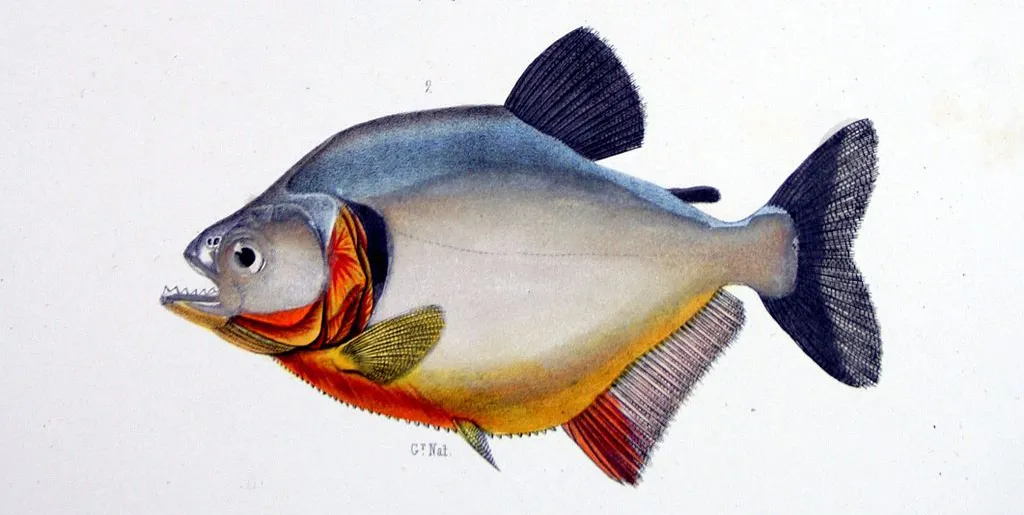
2. Piranhas have lived in South America for millions of years
Today, piranhas inhabit the freshwaters of South America from the Orinoco River Basin in Venezuela up to the Paraná River in Argentina. Though estimates vary, around 30 species inhabit the lakes and rivers of South America today. Fossil evidence puts piranha ancestors in the continent’s rivers 25 million years ago, but modern piranha genera may have only been around for 1.8 million years.
A 2007 study suggests that modern species diverged from a common ancestor around 9 million years ago. Also, the Atlantic Ocean rose around 5 million years ago, expanding into the flood plains of the Amazon and other South American rivers. The high salt environment would have been inhospitable to freshwater fish, like piranhas, but some likely escaped upriver to higher altitudes. Genetic analysis suggests that piranhas living above 100 meters in the Amazon have only been around for 3 million years.
3. Piranhas found outside South America are usually pets on the lam
Piranhas attract a certain type of pet lover, and sometimes when the fish gets too large for its aquarium said pet lover decides its much better off in the local lake. In this manner, piranhas have shown up in waterways around the globe from Great Britain to China to Texas. It’s legal to own a piranha in some areas, but obviously never a good idea to release them into the wild, as the species could become invasive.
4. Piranha teeth are pretty intense but replaceable
Piranhas are known for their razor-sharp teeth and relentless bite. (The word piranha literally translates to “tooth fish” in the Brazilian language Tupí.) Adults have a single row of interlocking teeth lining the jaw. True piranhas have tricuspid teeth, with a more pronounced middle cuspid or crown, about 4 millimeters tall.
The shape of a piranha’s tooth is frequently compared to that of a blade and is clearly adapted to suit their meat-eating diet. The actual tooth enamel structure is similar to that of sharks.
It’s not uncommon for piranhas to lose teeth throughout their lifetime. But, while sharks replace their teeth individually, piranhas replace teeth in quarters multiple times throughout their lifespan, which reaches up to eight years in captivity. A piranha with half of its lower jaw chompers missing isn’t out of the ordinary.
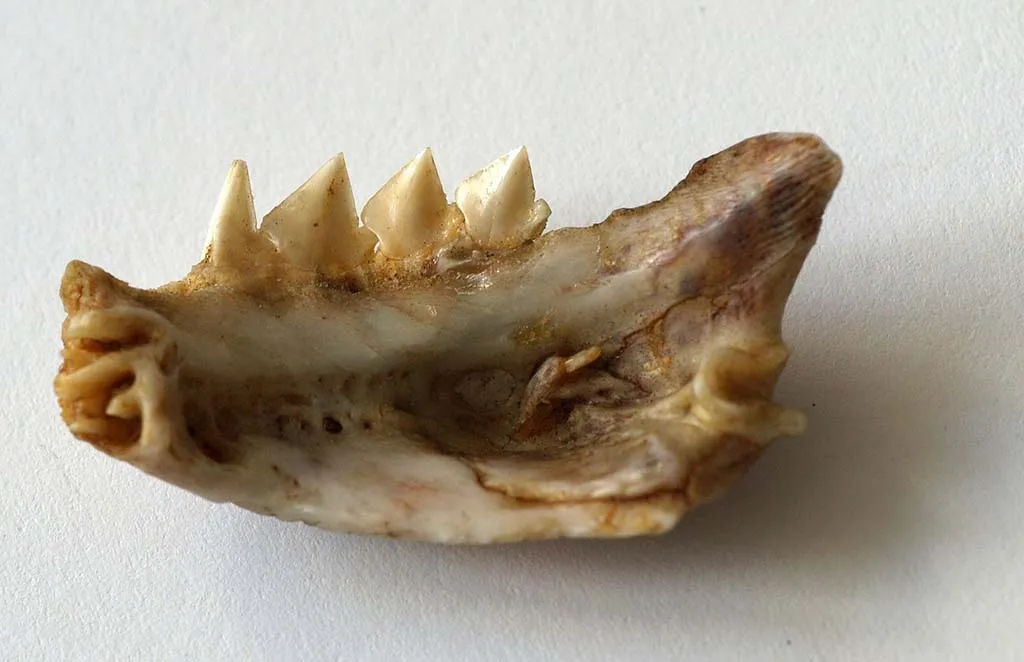
5. A strong bite runs in the family
Though they are hardly as menacing as fiction suggests, piranhas do bite with quite a bit of force. In a 2012 study in Scientific Reports, researchers found that black (or redeye) piranhas (Serrasalmus rhombeus)—the largest of modern species—bite with a maximum force of 72 pounds (that’s three times their own body weight).
Using a tooth fossil model, they found that piranhas' 10-million-year-old extinct ancestor, Megapiranha paranensis, had a jaw-tip bite force—the force that jaw muscles can exert through the very tip of its jaw—of as high as 1,068 pounds. For reference, the M. paranensis when alive weighed only 10 kilograms (about 22 pounds), so that’s roughly 50 times the animal’s body weight.
Science notes that T. rex’s estimated bite force is three times higher than that of this ancient piranha—but the king of the reptiles also weight a lot more. M. paranensis also had two rows of teeth, while modern piranhas have just the one. It’s not clear exactly what this ancient fish ate, but whatever it was, it must have required some serious chomps.
6. Humans and capybaras are only part of the piranha diet if these prey are already dead or dying
The idea that a piranha could rip a human to shreds is probably more legend than fact, too. For the curious, Popular Science spoke to some experts who estimate that stripping the flesh from a 180-pound human in 5 minutes would require approximately 300 to 500 piranhas. Cases of heart attack and epilepsy that ended with the afflicted drowning in a South American river do show evidence of piranha nibbles, but in those instances, the victim was already deceased when piranhas got involved.
While the myth of the man-eating piranha belongs to movie theaters, the Internet has a wealth of mysterious footage of piranha packs taking down capybaras. Some piranhas do occasionally eat small mammals, but as with humans, it’s usually when the unfortunate animal is already dead or gravely injured.
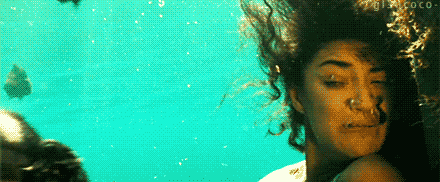
7. Some piranhas are cannibals
A typical piranha diet consists of insects, fish, crustaceans, worms, carrion, seeds and other plant material. A red-bellied piranha (Pygocentrus nattereri), for example, eats about 2.46 grams per day—about one-eighth of its average body mass. Crustaceans, bugs, and scavenged scraps make up the largest chunk of their meals, but the balance of this diet can shift depending on the fish’s age and the food sources available.
So occasionally when resources are low and competition for food is high, piranhas have been known to take a chunk out of a fellow piranha, living or dead. Even weirder, wimple piranhas (Catoprion mento) feed on fish scales, which contain a protein mucus layer that’s surprisingly nutritious.
8. And some are vegetarians
Despite their flesh-eating reputation, some piranhas are omnivorous, eating more seeds than meat, and some even subsist on plants alone. For example, in the Amazonian rapids of the Trombetas basin in Pará, Brazil, scientists discovered that Tometes camunani lives solely off of riverweeds.
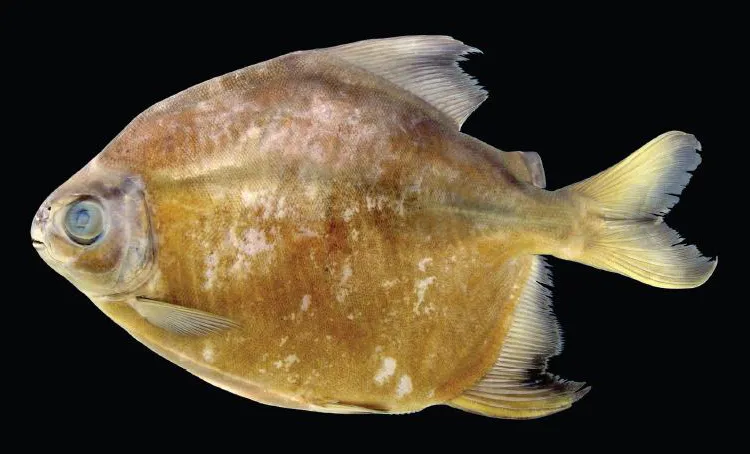
Piranhas' closest relative, the pacu or tambaqui fish (Colossoma macropomum), also lives on a mostly meat-free diet. Pacus closely resemble some piranha species in size and coloration, and thus, are often sold at fish markets as, “vegetarian piranhas,” as well as other less flattering nicknames.
9. When hunting prey, piranhas go for the tail and eyes
A 1972 study in red-bellied piranhas found that the fish most frequently attacked goldfish in a lab setting beginning with their prey’s tail and/or eyes. The researchers concluded that such an attack strategy would effectively immobilize piranhas’ opponents and prove useful for survival.
10. Piranhas bark
From anecdotes and observational research, scientists have known for a while that red-bellied piranhas make bark-like noises when caught by fishermen. Upon further examination, a team of Belgian scientists found that they make three distinctive types of vocalization in different situations.
In a visual staring contest with another fish, they start making quick calls that sound similar to barks, meant as a warning along the lines of, “Don’t mess with me, buddy.” In the act of actually circling or fighting another fish, piranhas emit low grunts or thud sounds, which researchers believe communicates more of a direct threat to the other fish.
The fish makes these two sounds using its swimbladder, a gas-containing organ that keeps fish afloat. Piranhas contract and relax muscles around the swimbladder to make noises of different frequencies.
The third vocalization? Should the opposing fish not back down, the piranha will gnash its teeth together and chase its rival.
Here are all three sounds back to back:
11. Piranhas run in packs for safety, not strength
Part of piranhas’ fierce reputation stems from the fact that they often swim in packs or shoals. Red-bellied piranhas are particularly known as pack hunters. Though it might seem an advantageous hunting technique—more fish could theoretically take down a larger foe—the behavior actually stems from fear.
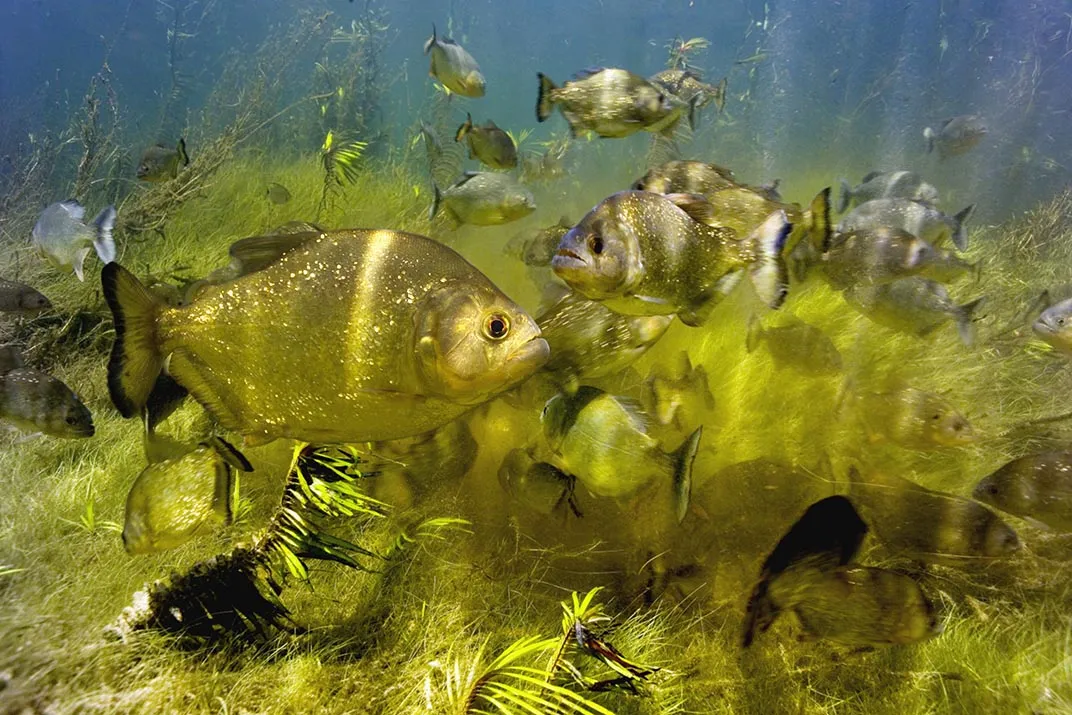
Piranhas aren’t apex predators—they’re prey to caimans, birds, river dolphins, and other large pescatarian fish. So traveling in shoals has the effect of protecting the inner fish from attack. Further, shoals tend to have a hierarchy of larger, older fish towards the center and younger fish on the outer edges, suggesting that safety might be the true motivation.
In 2005, researchers looked at shoal formation in captive red-bellied piranhas and found that the fish both breathed easier in larger shoals and responded more calmly to simulated predator attacks. The researchers also observed wild piranhas forming larger shoals in shallow waters where they might be more vulnerable.
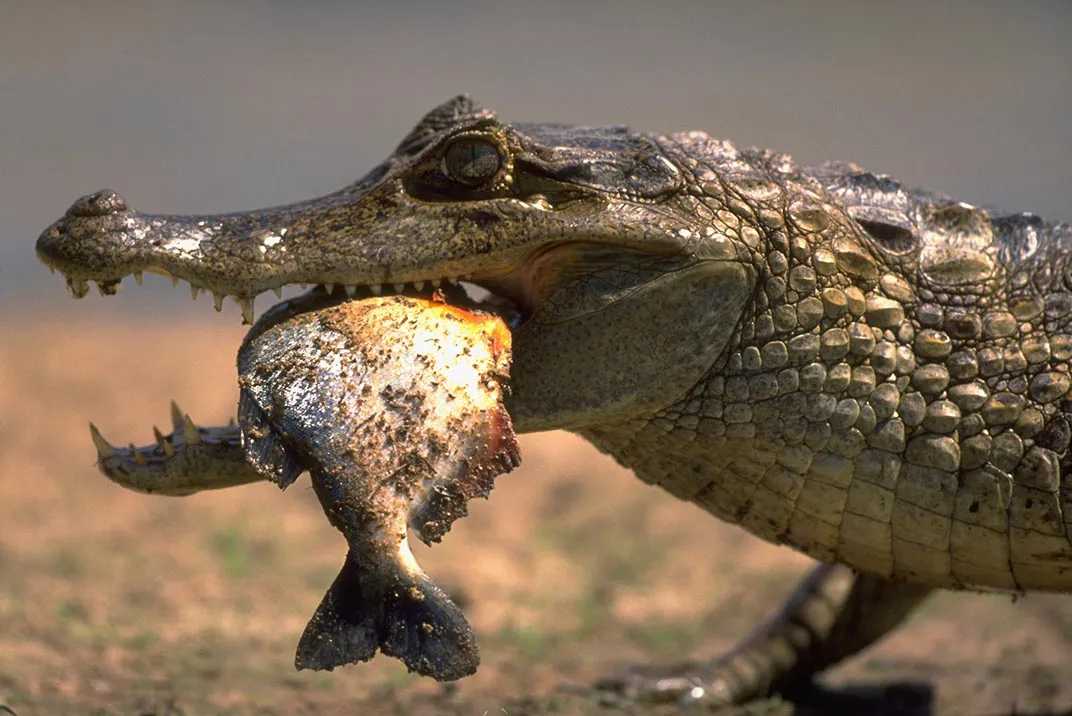
12. They’ll only attack you if you mess with them (or their eggs)
Though piranhas have a reputation for attacking, there’s not much evidence to support the legend. Like grizzly bears, wolves, sharks, and pretty much any large scary thing with teeth, piranhas will leave you alone if you leave them alone.
Black piranhas and red-bellied piranhas are considered the most dangerous and aggressive toward humans. Nonetheless, South American swimmers typically emerge from piranha-infested waters without loss of flesh. For swimmers, the danger comes when the water level is low, prey is scarce, or you disturb its spawn buried in the riverbed—basically situations where the fish either feel really threatened or really hungry, and thus become more aggressive.
For fishermen, untangling a piranha from a net or a hook is where things get dicey. In most cases, if they bite you, they only bite you once—and they usually go for the toes or feet.
13. Piranhas seem to be attracted to noise, splashing, and blood
A 2007 study linked noise, splashing, and spilling food, fish, or blood into the river with three instances of piranha attacks on humans in Suriname. Piranhas might be naturally attuned to pick up on the sound of fruits and nuts falling from trees and hitting the water and, thus, mistake splashing children for the noise associated with food.
As for blood, it likely does not render a piranha senseless as the movies would suggest, but piranhas can smell a drop of blood in 200 liters of water. So, if you are a bleeding, rambunctious child, a dip in the Amazon might not be the best idea.
14. They’re great grilled or in soup
In some parts of the Amazon, eating piranha is considered taboo—a common cultural perception for predatory fish—while others are convinced it’s an aphrodisiac. Piranha soup is popular in the Pantanal region of Brazil, but many choose to serve the fish grilled on a banana leaf with tomatoes and limes for garnish.
Perhaps it’s time to put the myth of evil piranhas to bed, and instead enjoy a nice bowl of piranha soup.
/https://tf-cmsv2-smithsonianmag-media.s3.amazonaws.com/accounts/headshot/Screen_Shot_2014-01-27_at_12.05.16_PM.png)


/https://tf-cmsv2-smithsonianmag-media.s3.amazonaws.com/accounts/headshot/Screen_Shot_2014-01-27_at_12.05.16_PM.png)